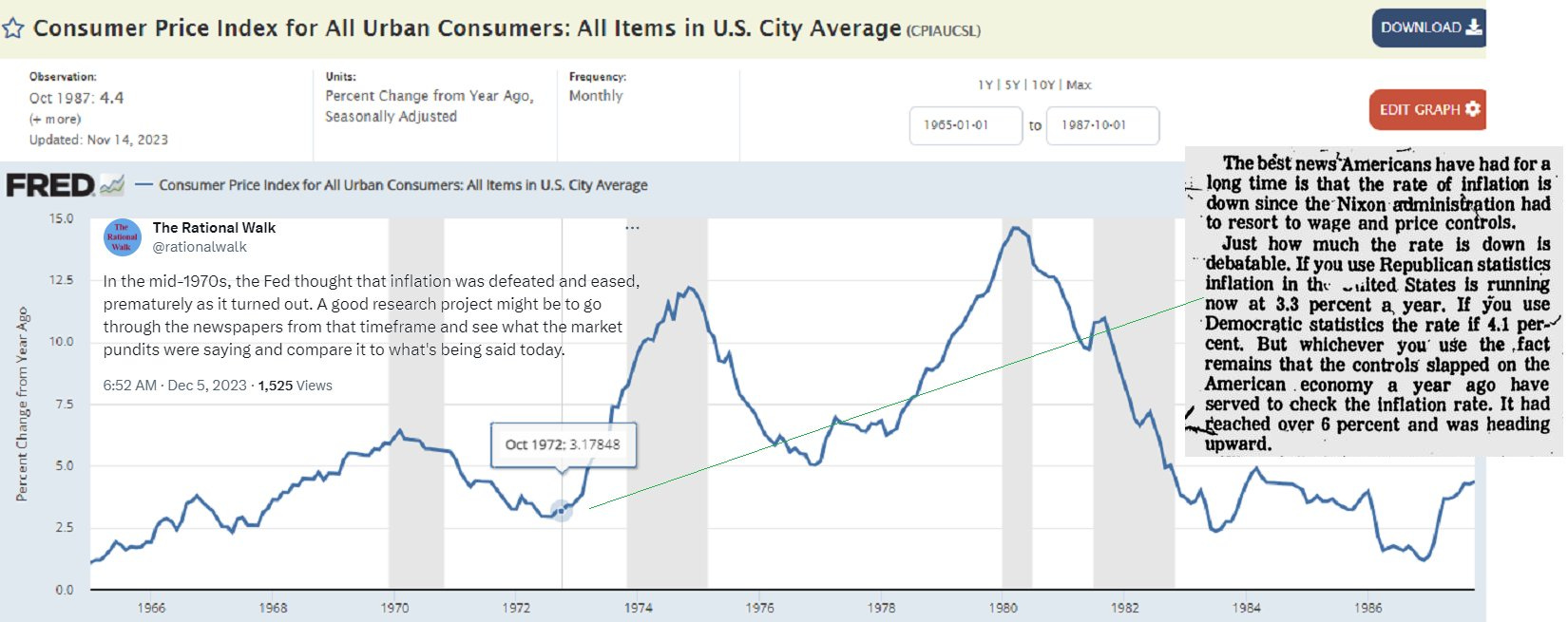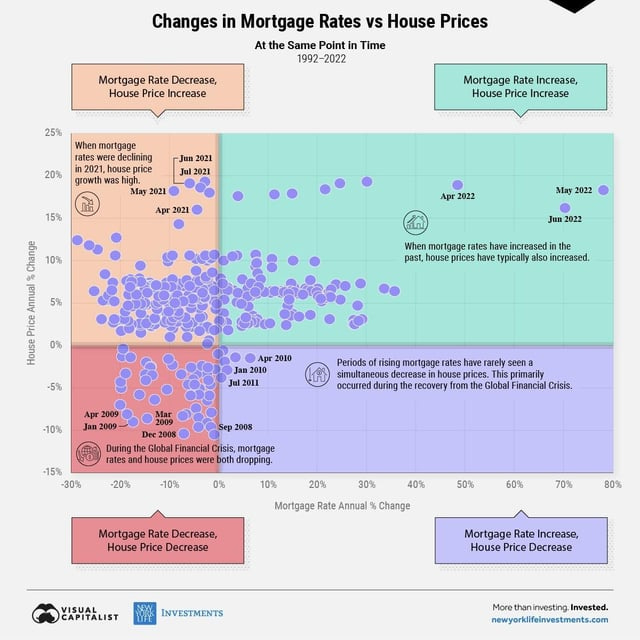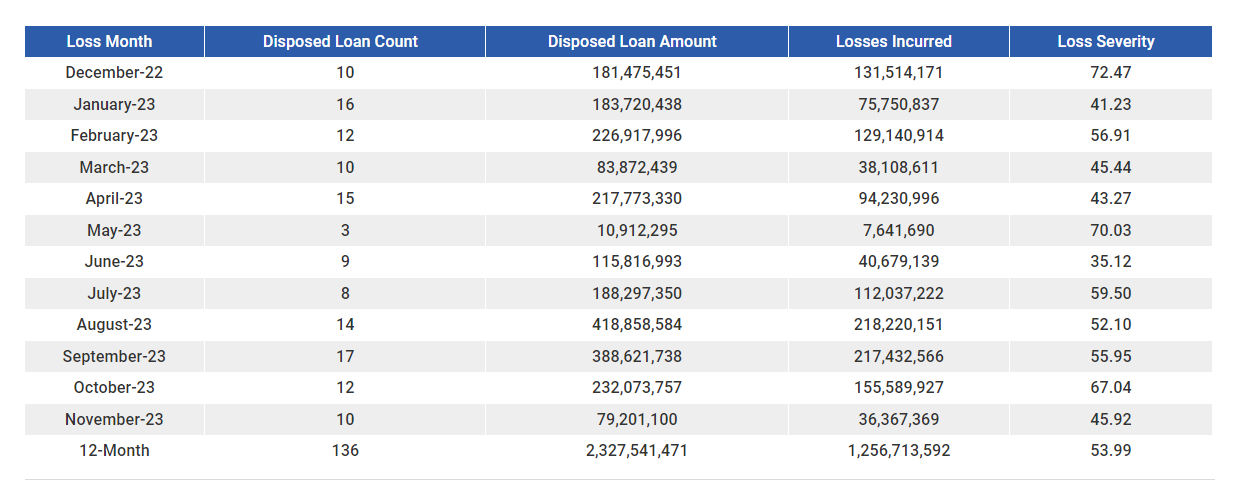Debaser
"The Constitution describes tyranny as fatiguing us into compliance." - Lance Henriksen

fyi I’m supposed to have a podcast I did last Friday released tomorrow. Details to follow.
"I know, and everyone out there knows, it's increasingly more difficult to keep pace with the debasement in the purchasing power of your paper money..."
The Fed will be forced to acquiesce to higher rates of inflation. Mark my words, at some point in the future…they'll raise the inflation target to a band that will be higher
You’ve got to go back to 2018, and if you've heard me say this before, I'm sorry if it's redundant, but it's so important. In 2018 Jerome became the Fed chairman and he told us what he's was going to do. They wrote 310 Pages, 11 different white papers, I read every single word of all these, and you know, he told us exactly what he was going to do - we're gonna let inflation run, we're going to use an 8-year average, we want it to be above average, and have the average go above 2% for a time, and we're not going to have what they call ‘tolerance bands’ that some central banks use, which means if it gets to five we'll start scaling back or something. No tolerance bands means we will tolerate any level of inflation, we don't care how high it gets. This is what they were saying, and then we will raise interest rates, we follow the Volcker Playbook, because Powell is a Volcker disciple, he has told us this in many of his speeches before he became Fed chairman, so the problem is they waited too long to tighten…
What really gets me excited and yet petrified at the same time is that when you get this downturn that is absolutely coming in the economy…they start printing money again, and they will because, you know, when they're looking into a debt deflation abyss, they will choose to reflate every single time at any cost.
The next time around is going to be - you have to print exponentially more money to have the same impact, and things are so ridiculous now - I mean, Tom, in the last four months of the fiscal year public borrowing, and it ended September, public borrowing, four months, $ 1.76 trillion dollars - that's five trillion annualized rate. This spending’s out of control…
"We've never had a deflationary bust because inflation was too close to zero, or 1.5% instead of 2% - we've had them because we've had these tremendous ASSET BUBBLES..."
Stan Druckenmiller, 2021
Think of the implications of what they’re saying here:
Grant Williams: "Obviously the petrodollar agreement has allowed pretty much everything that’s happened over the last 50, 60, 70 years to happen, the strength of America, the universal adoption of the dollar."
Felix Zulauf: "...The petrodollar does not exist anymore."
Like Russell Clark above, I am filled with (cheerful) dread - I’m afraid the S.O.B.’s are going to debase the currency like crazy over time (i.e., even more than usual.) This will severely hurt most people, but Janet Yellen and Jay Powell will be fine. Invest accordingly.
"The first panacea for a mismanaged nation is inflation of the currency; the second is war." - Ernest Hemingway, Esquire 1935
“…no government's going to say, well, okay, vote for me and I'm going to raise taxes - that's impossible - so you’ve got to come back to financial markets to fund this, and that is the problem. Debt monetization is the only thing that can really work in this world, otherwise you face the unpalatable prospect of cutting spending, and I would argue that's pretty much impossible because most of this stuff is mandatory spending.”
I think inflation is just a less honest, very regressive form of default, but it’s the route corrupt governments always take.
The Fourth Turning: "It never seems to occur to Howe that the American regime (and the whole Western world) could be structurally failing precisely because it has been captured by run-away progressive managerial technocracy..." - N.S. Lyons
The RealClearMarkets/TIPP Economic Optimism Index dipped to 40.0 in December 2023, marking a 10.1% decrease from the previous month's figure of 44.5 and falling short of market expectations of 45.2. Looking at specific components, the six-month economic outlook, measuring consumer perceptions of the economy's prospects in the next six months, plunged by 12.3% to 34.3. Similarly, the personal financial outlook, reflecting how Americans view their own finances in the next six months, declined by 6.6% to 49.5, reverting to negative territory. Additionally, the confidence in federal economic policies sub-index, a proprietary RCM/TIPP measure evaluating views on the effectiveness of government economic policies, dropped by 13.0% to 36.1.
History rhyming: October 2, 1972
Defaults by Chinese borrowers have surged to a record high since the outbreak of the coronavirus pandemic, highlighting the depth of the country’s economic downturn and the obstacles to a full recovery. A total of 8.54mn people, most of them between the ages of 18 and 59, are officially blacklisted by authorities after missing payments on everything from home mortgages to business loans, according to local courts. That figure, equivalent to about 1 per cent of working-age Chinese adults, is up from 5.7mn defaulters in early 2020, as pandemic lockdowns and other restrictions hobbled economic growth and gutted household incomes.
If we had CBDC’s, it’d be easy to “blacklist” Americans.
“Should people be encouraged to eat the foods decided best for them, such as a plant or insect-based diet? CBDCs could do the trick. Should people be limited in how much they can spend per week on carbon-intensive purchases? CBDCs could help with that too.”
Mortgage Rates vs House Prices (1992-2022)
Mortgage rates and house prices have a weak positive correlation of 0.26. This means that when mortgage rates increase, house prices typically also increase…A change in mortgage rates may not be immediately reflected in housing prices. To test whether there was a lag effect, we also explored the relationship between historical mortgage rates and housing prices two years later…
The pattern was similar, albeit with a slightly negative correlation of -0.15. In other words, mortgage rates and house prices tended to move in opposite directions.
Melody Wright pointed this out:
America's Car-Mart (NASDAQ:CRMT) Q2 FY2024 Highlights:
Revenue: $361.6 million vs analyst estimates of $376 million (3.8% miss)
EPS: -$4.30 vs analyst estimates of $0.79 (-$5.09 miss)
Free Cash Flow was -$30.94 million compared to -$41.81 million in the same quarter last year
Gross Margin (GAAP): 7.6%, down from 15.9% in the same quarter last year
Same-Store Sales were up 2.7% year on year (big miss vs. expectations of up 7.5% year on year
Net charge offs: 7.2% vs analyst estimates of 6.4%
“With a strong presence in the Southern and Central US, America’s Car-Mart (NASDAQ:CRMT) sells used cars to budget-conscious consumers.”
CEO Doug Campbell: …Goods and services are still far pricier than they are just three years ago, with the economic inflationary pressures on our customers now more prevalent in all areas of their lives. Things like higher energy costs, food, housing and auto insurance, just to name a few. This is the largest contributing factor that drove an increase to the frequency of losses during the quarter of 24%…
CFO Vickie Judy: On the credit losses, our net charge-offs as a percentage of average finance receivables were 7.2% versus 5.8%. This compares to our prior 10-year average for second quarter of 6.2%, and that includes the positive COVID periods. As a comparison to pre-COVID periods, our average net charge-offs for the five-year period pre-pandemic were 7% for second quarter. The frequency of losses accounted for over two thirds of the credit loss increase. Severity was also higher than usual, caused by some rapid vehicle depreciation exhibited last year that made some of the originations in the calendar year of '21 and '22 pools experienced both higher frequency and severity of losses.
On a related note…Inflation Balloons Casper Police Department Renovations By 52% To $38 million
How ‘Progress’ Ruined Cars
“There is an independent Ford mechanic who has a YouTube channel called FordTechMakuloco. A couple of months ago, he told the story of a tail light on a 2018 F-150 Limited that cost $5,600 to repair. How could this happen? Here is the thing about tail-light housings: Moisture gets in past the gasket on the lens. It just does. This, in turn, causes corrosion, and eventually, the tail light stops working. In a sane world, what you would then do is clean the contacts (or replace them), put in a new bulb, replace the gasket on the tail light lens, and go on your way. Or maybe the lens itself is cracked, and you have to replace it as well. Maybe the wiring leading up to the contacts is also corroded, so you cut it out and splice in a few inches of new wire. Worst-case scenario, you might be down a few hundred bucks.
That isn’t the world we live in. On this particular luxury pickup truck, moisture in the tail light caused the usual corrosion, making resistance on the circuit go out of range. This circuit is in communication with many other circuits, so electrical gremlins propagated (probably reading as ground faults), and eventually, the truck was completely dead. At this stage, identifying the root cause of the breakdown was no trivial task. But most of the $5,600 charge for getting the truck running was for parts confined to the tail-light housing, not the diagnostic and parts-swapping labor. Commenting on this case, another YouTube mechanic named Uncle Tony points out that salvage yards are full of recent-model cars that are in great shape—mechanically sound and rust-free, with good interiors and good paint—but underwater on repair costs due to electronic complexity.”
Industrial, Multifamily, Self Storage Stare Down Oversupply Issues Until recently, it seemed to me that these CRE sectors were considered to be bulletproof.
Oversupply was the theme in Marcus & Millichap’s recent news video, which provided a Q3 update on industrial, multifamily housing, and self storage asset classes. As of the third quarter, the industrial vacancy rate nationally was 4.8%, which is up 120 basis points from a year prior with annual rent growth of 9.5%.,,
Apartment properties also face significant supply risk in 2024, according to Marcus & Millichap. The multifamily vacancy rate for Q3 was 5.4%, up 130 basis points from the third quarter last year. Rent growth on a national level tapered significantly over the last year with effective rents up just 1.7% from the third quarter of 2022. Apartment demand has been positive every quarter this year, but it has fallen short of the record pace of deliveries, about 420,000 new units will be completed in 2023. “We do expect construction to rise even further in 2024, which will continue to place upward pressure on vacancy rates in most markets…”
Self storage could also face new supply challenges, Chang said. As of the third quarter, the average national self-storage vacancy rate was 8.6%, up 110 basis points on a year-over-year basis while street rents were down 4.5% compared to last year.
Multifamily:
I tend to think that we're going to end up seeing the 2021 and 2022 vintage - which was the largest transaction volume years on record for multifamily by huge amounts - end up one of the worst vintages in the history of our industry.
In 2021, in the fourth quarter alone, over $150 billion in apartments transacted. Over the course of the year over 300, almost $400 billion transacted. To put that in perspective, the previous high in 2019 was under $190 billion for an entire year, so capital came into the space like we've never seen before…
I was reminded of this, from July 2023:
"Private equity firm the Blackstone Group remained the most active buyer of U.S. real estate for the past four years, between 2018 and 2022, with 233 deals."
Here is Blackstone’s BREIT fund’s composition:
Check out these CMBS Loan Loss Severities!
"The big headline is that one in five properties in Greater Boston has been sold to an investor in the period between 2004 and 2018"
Nearly 5% of Austin metro homes sold at a loss from August to October — up from 0.75% a year ago. The median loss was around $35,000, per Redfin data.
Here’s a link to seemingly scary FDIC chart that’s been floating around:
Patrick Bet-David explains the Cantillon Effect in 10 seconds:
A New Domino Theory
“Today, as the United States and its allies rush with increasingly visible panic to try to put out one fire after another around the world, I’m afraid that a global failure cascade may be exactly what we’re witnessing. The number of lights blinking red is growing faster and faster as more dominos fall. The challenge is that if this is the case then even solving existing problems will never be enough: new problems will emerge out of the very logic of the cascade itself, and efforts to fight one fire may just set off new fires. Might America, by embroiling itself in two regional wars at once, prompt China to invade Taiwan when it otherwise wouldn’t have dared, for example? It seems like a possibility. But then we can’t know, on this or any other potential escalatory crisis. Growing unpredictability is now the defining feature of the system.”
- N.S. Lyons (excellent article about the dangers of complex systems)
I have to credit Wall Street with creating this career for me, because few people do basic analysis anymore. The company analysts take whatever the companies tell them verbatim, accept that as the gold standard, and don't do their own analysis. The rest of Wall Street more broadly places analysis secondary to their profit motive.
I hate to be cynical about it, but most people on Wall Street are paid to tell you that everything will be great forever and that you should always buy stocks and this and that. Maybe occasionally, you want to churn from one sector to the other to generate some commissions, although that's less of a thing now. Research is the monkey on the back of the deal-making engine for Wall Street.
It's a long way of saying, "Basically, I just look at the data."




















A good friend wrote this week about the company store and company housing at a coal mine in Montana. His ancestors were indebted for passage from Ireland in the 1890s and in several instances died of black lung disease within a decade or so of the journey. All of them save one were only ever paid in script (paper coupons issued by the company). Script was only good at the company store and for company housing in the company town. There was no exchange to American coins or bank notes.
Bernard makes the comparison to dollars in America since 1971 with no connexion to gold or silver. You can keep running on the treadmill but you can never get ahead. You can read his Substack at Radio Farside. Glitchy 'stack app doesn't want me to link to persons with @ today but maybe search won't glitch. lol
Anyway, it's a valid comparison. His one exceptional ancestor got a job at the owner's home with occasional silver coins in tips or payments. Eventually left town and bought a cottage somewhere in Gollyfornia. So it's a happy story!
Janet Yellen and Jerome Powell are evil. They hate humanity and enslave mankind with false promises and paper script. Their ambition is a patriarchal digital currency that prevents workers from having any fun and hastens their deaths. Every lamp post on Constitution Avenue (for the irony guys) should be decorated with bureau rats strangling in the entrails of central bankers, but many things which Americans should have done decades ago remain undone.
There is a reckoning. It's coming. God's will be done. Amen.
Thanks for this great post "Thoughts on complex systems, failure cascades, and the international order" by N.S. Lyons. As a software engineer, I can appreciate the insights regarding complex & simple systems.
"... complex systems are vulnerable to failure cascades, in which the failure of even a single part can set off an unpredictable domino effect of further failures, which spread exponentially as more and more dependencies fail."
"In the best cases simpler systems are not only resilient but actively anti-fragile (they gain from and grow stronger amid disorder)... Simplicity itself can be a serious asset.”
"And empires fall the same way most complex systems do: by becoming too complex to bear their own weight."
If anybody is interested, this is the main difference b/w Bitcoin & Ethereum/"cryptos". Bitcoin is boringly simple. It's never been hacked since inception & its uptime is 99.95%. Ethereum is growing more & more complex & nobody understands everything anymore.